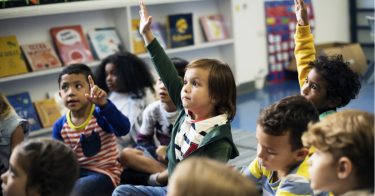
As the beginning of another school year is upon us, it is never too early to begin thinking about where your little one will be going to school. I recently went through this process when deciding what would be the best learning environment for my child. From my experience, early planning is important, especially for those considering schools in the New York metro area, where there are many options but often waiting lists for the most-sought after schools. As you begin the process, there are a couple of important things to keep in mind.
Know Your Child
Not all children learn at the same rate or even in the same ways, and it is your responsibility (as the parent or caregiver) to have a good understanding of the child’s demeanor, personality and learning style to determine the best educational setting. Once this is apparent, the process of school selection will come much easier.
Know Your Options
When selecting a school for your child, you should look for schools that are a good fit for your child as well as your budget. There are many resources online and in book stores for doing your research, but some of the best sources will likely be friends and neighbors. In doing your research, know that there are many types of schools, each with their own admission policies and costs, which include:
Public or “State” Schools
- Attendance at these schools is mandated by law, unless your child attends another school. These schools are primarily operated by the local and state government, and are funded by taxpayers. The particular school your child attends is often determined by which the district or zone in which you live.
Charter Schools
- Although charter schools are generally public funded, they are not held to the same regulations as a public school. This is a tuition-free alternative option for education, and as such, is often in high demand. Also, high-performing charter schools are in such demand that there are lotteries in order to ensure a fair approach to enrollment.
Private or “Independent” Schools
- These schools are not funded by local, state or national government, and are instead paid primarily by each individual student through tuition. These schools vary in teaching style, approach to learning and sometimes even dress code.
Parochial Schools
- A combination of conventional and religious education, parochial schools are a form of private education requiring the student to pay tuition. Admission to parochial schools is generally not limited to those of particular faiths, but each school varies.
Boarding Schools
- Boarding schools require some or all students to live on campus with teachers and administrators. Many boarding schools also have “day students” that live in the area, but do not stay on campus.
Given that the admission process varies from school to school, it is best to make a list of each school of interest with details regarding deadlines and proper procedures. Other important details that you should make note of include the availability of tours, whether an interview (or play date) is required, and the process for applying for financial aid (e.g., necessary forms, deadlines, amount of aid available, etc.).
The school search process can be exciting, emotional and stressful. In the end, my family is very pleased with our decision. Finding a school that is just right for your child will make a difference in how they approach education and learning in the future. Happy Fall!
Article by Shnieka Johnson, museum educator, curriculum designer and independent consultant specializing in museums and schools

Read Next | This Is How to Choose a Preschool—a Few Important Considerations
Like what you read? JOIN the Mommybites community to get the latest on FREE online classes, parenting advice, events, childcare listings, casting calls & raffles, and our Parents With Nannies Facebook group. SIGN UP NOW!




Comments are closed.